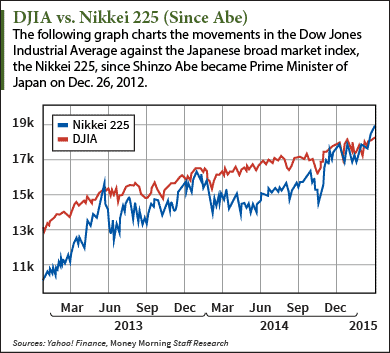How to use ETFs to profit from falling markets
Post on: 6 Июнь, 2015 No Comment

The Financial Post takes a weekly look at investing products worthy of a spot in your kit. This week: Inverse and leveraged ETFs that rise when markets dip.
Investing is so much easier when the market is heading up, isnt it? But when the market is going the other way, as it is in Canada where the S&P/TSX Composite Index is down 8% since February, investors have to get a little more creative.
In such an environment, certain exchange-traded funds can help hedge some losses — or even be nicely profitable. This may seem a bit counterintuitive because the most common ETFs track broad indexes. If the TSX goes up, the ETF goes up, and so forth. But as with many other investing instruments, ETFs are getting more versatile and more complicated.
I wouldnt confuse the original orthodoxy of ETF construction as a long-only basket of market cap weighted stocks with what they are now, said Jaime Purvis, executive vice-president, national accounts, at Horizons ETFs. For the first 15 years, thats what they were.
Having a diversified portfolio is important and ETFs are an oft-cited way of doing so cheaply. But in a down market, proper diversification means more than just picking ETFs following different equity classes.
During the financial crisis and recession of 2008-2009, when markets were moving in one direction (down) it didnt matter what kind of stocks investors were holding, Mr. Purvis said.
Thats why institutions look at additional asset classes that are non-correlated, he said.
All investors should be looking at asset classes that include options, covered calls, futures, currencies and even hedge funds, he added.
Common specialized ETFs include inverse ETFs, which move up when markets fall, leveraged ETFs that can amplify market movements one or two times, and even a combination of the two. For instance, the Horizons BetaPro U.S. Dollar Bear+ ETF (HDD/TSX) uses Canadian dollar futures contracts to replicate results equal to 200% of the daily inverse performance of the U.S. dollar.
Horizons and its competitors also offer ETFs that behave similarly for equity indexes and fixed-income products of all stripes.
Alfred Lee, vice-president and investment strategist at BMO Global Asset Management, is also concerned that investors have become overexposed to fixed income as a safe haven from volatile equities, leaving them vulnerable to missing an equity rally.
If youre sure on a market selloff, then you may want to look at an inverse ETF to neutralize your equity exposure, he said. A low-beta ETF maintains your equity exposure but lowers volatility.
The BMO Low Volatility Canadian Equity ETF (ZLB/TSX) takes the 40 lowest beta stocks from the 100 largest equities in Canada.
For when markets are in real trouble, Horizons at the end of May is launching two black swan (an extreme, unexpected, market-changing event) ETFs, developed with Nassim Taleb, the man who coined the term.
The ETFs will track the TSX 60 and S&P 500, respectively, with more than 90% positions in each index. The actual percentage could be anywhere from 97% to 99%, but Horizons has not made a decision yet.
The remaining portion of the ETF will be used to buy extremely out-of-the-money puts (an option that allows the holder to sell a financial instrument at a certain price at a certain time), which are cheap because they are so deep.
In the event of a black swan event that brings the market down, say, 20%, the puts trigger and cover the losses in the rest of the ETF.
If the market goes up, you get most of the upside with a little bit of drag. If the market drops 20%, those puts become very valuable, Mr. Purvis said.
In the last 10 years, the TSX 60 has fallen by more than 20% twice, dropping 30% in 2002 and about 50% in 2008-2009.
Its like buying insurance. You dont buy it hoping to use it, but you want to have it.














